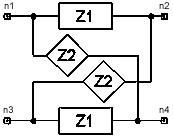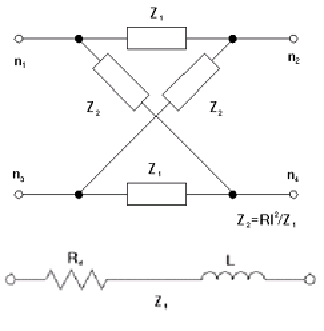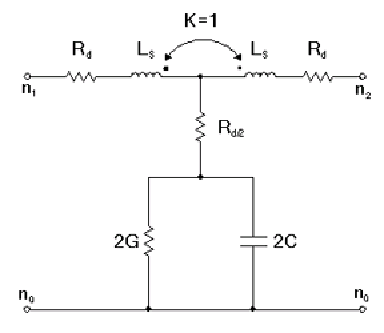|
微波射频仿真设计 |
|
|
微波射频仿真设计 |
|
| 首页 >> Ansoft Designer >> Ansoft Designer在线帮助文档 |
|
System Simulator > All-Pass Network, First-Order (AP1)


Notes1. The model is described by the following: 


where: 2. RI is the image impedance, and corresponds to R in the table of parameters, and 3. F0 is the resonant frequency, and corresponds to F in the table of parameters. 4. AP1 is useful for finding values of M, F (F0), and possibly R (RI) through optimization. 5. The quality factor Q is assumed to be infinite (Rd=0 W) unless a non-zero positive value is supplied. 6. The lattice impedances of the first-order all-pass
network are: 

where: 




According to the Bartlett bisection theorem [Ref. 1], the circuit shown below is an exact equivalent of the AP1 lattice structure. The TEE section containing the negative inductance, -L/2, as the shunt element can be replaced with perfectly coupled coils, k=1, to obtain the circuit shown below:
 Note: The self-inductance, LS, is given by LS=L/2.
In terms of the parameters for AP1, the design formulas
are: 

As an illustration, the circuits CKT1 and CKT2 defined below are equivalent: .PARAM F0=1MHZ *.PARAM LS=2.98416UH Netlist FormAP1:NAME n1 [n2] [n3] [n4] R=val F=val M=val [Q=val] Netlist ExampleQuality factor ¥: Quality factor 50: References1. Ernest A. Guillemin, Communications Networks, Vol. II: The Classical Theory of Long Lines, Filters, and Related Networks, (New York: John Wiley and Sons, Inc., 1935), p. 439. HFSS视频教程 ADS视频教程 CST视频教程 Ansoft Designer 中文教程 |
|
Copyright © 2006 - 2013 微波EDA网, All Rights Reserved 业务联系:mweda@163.com |
|